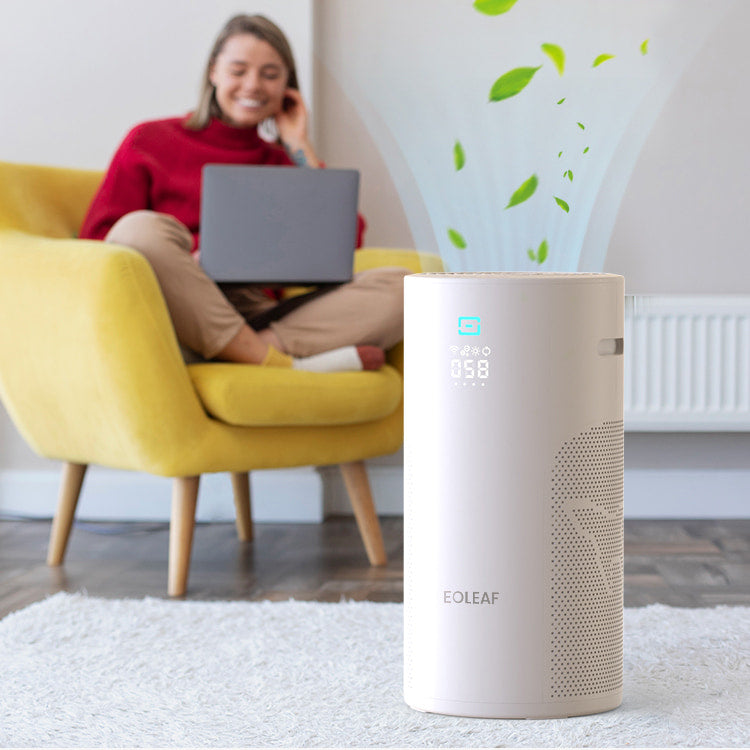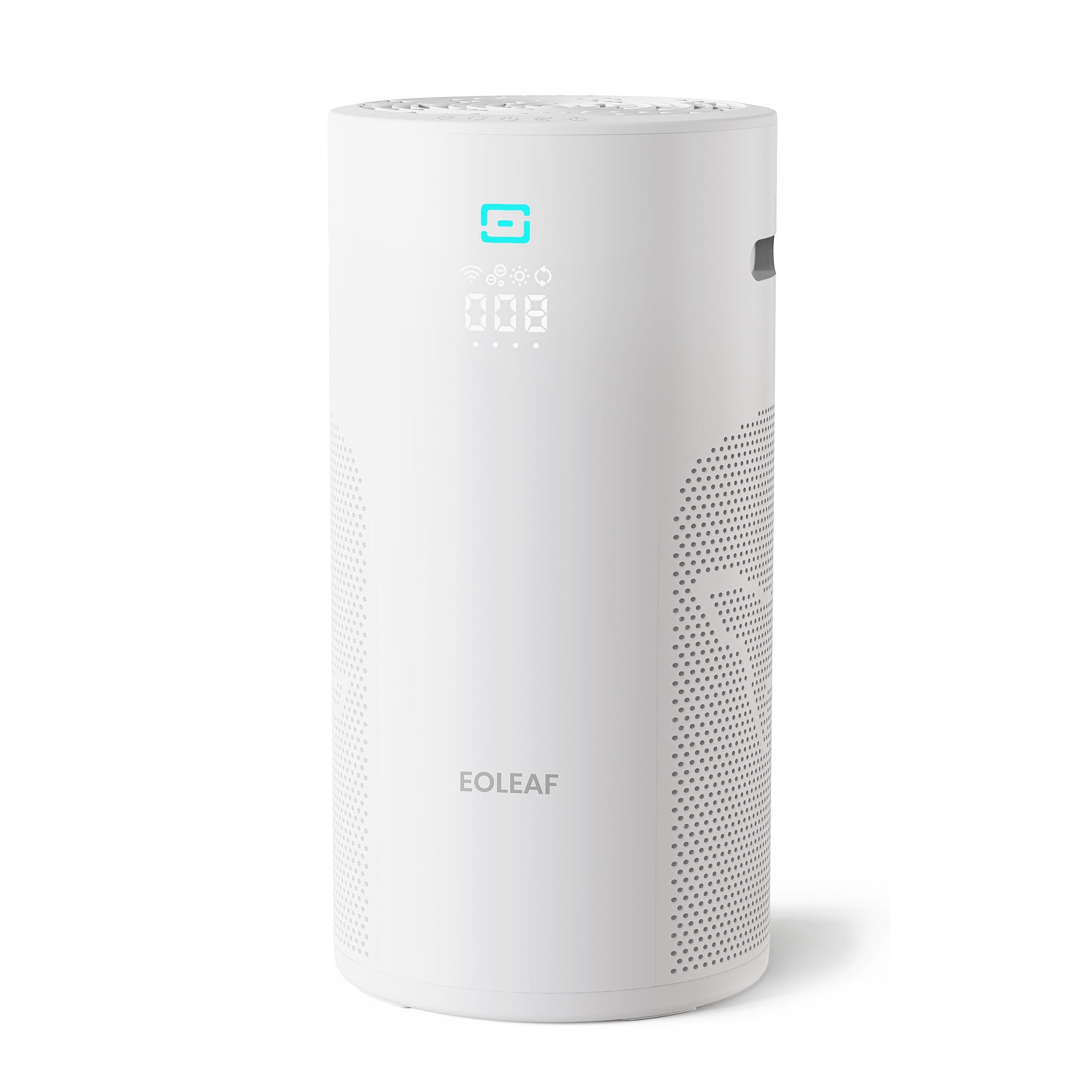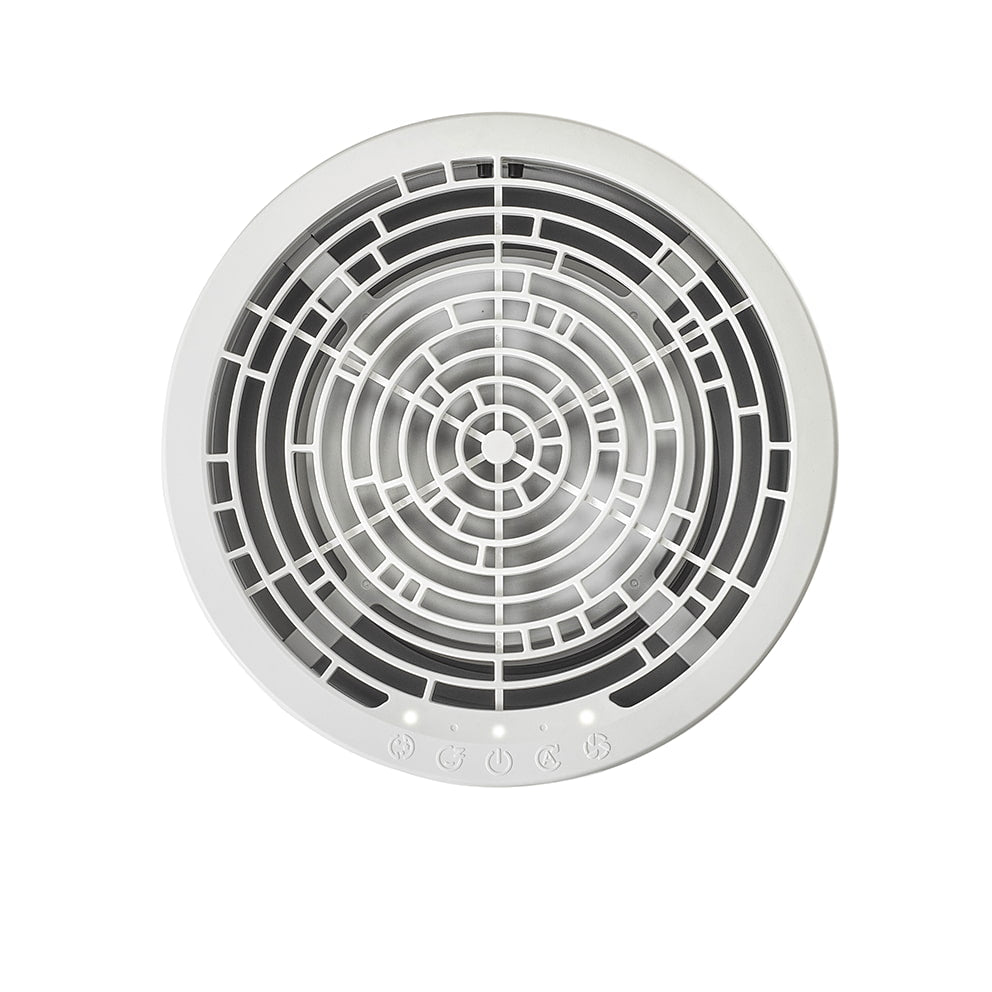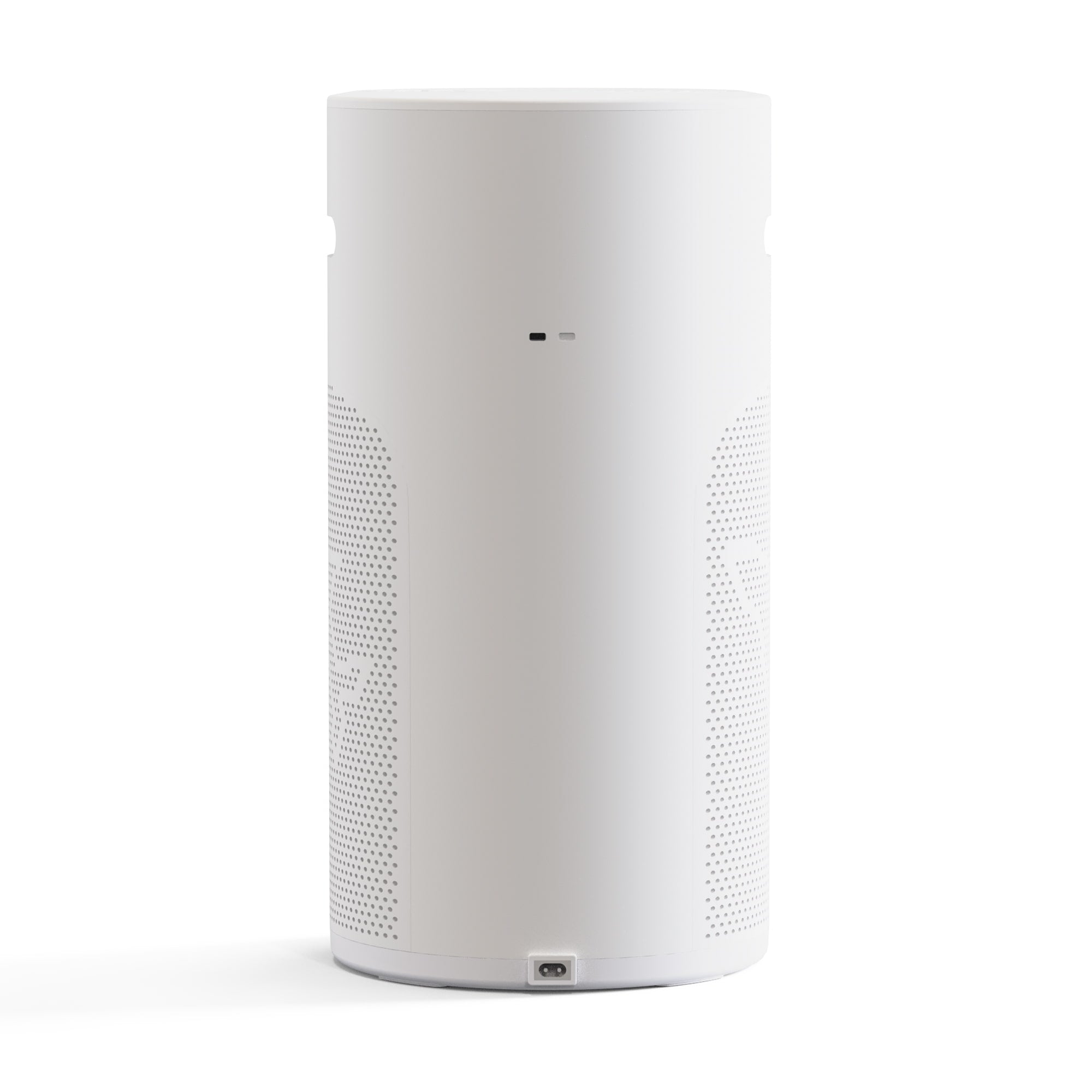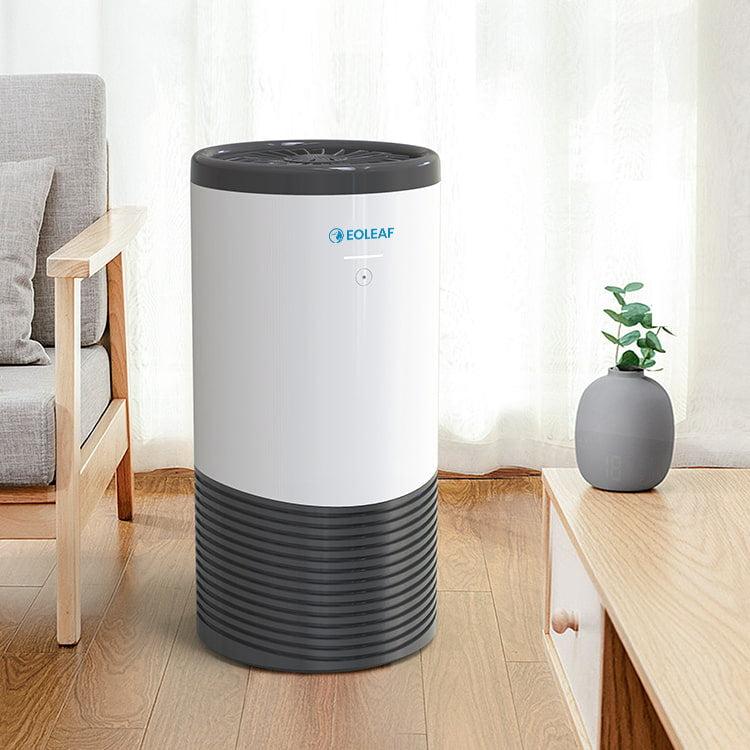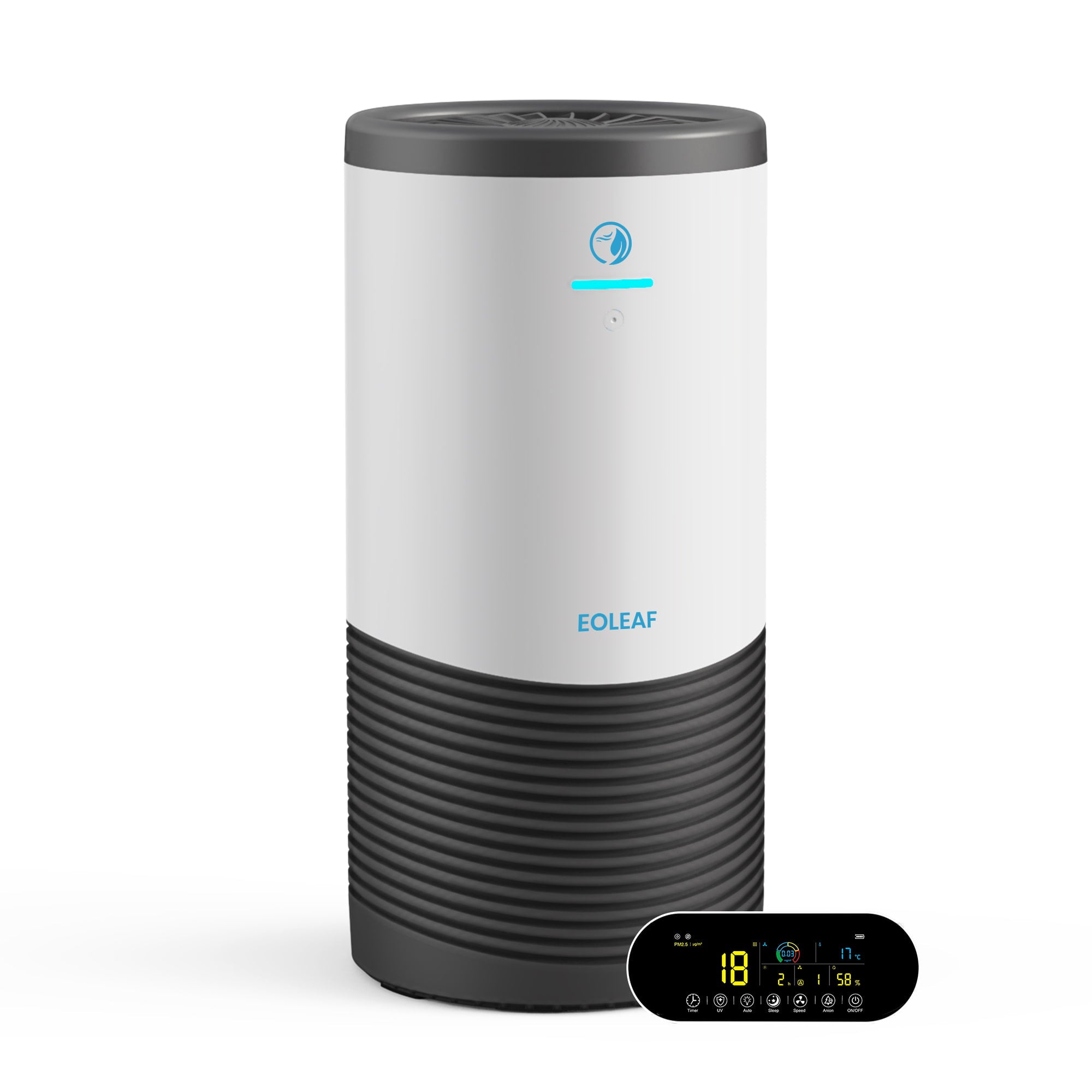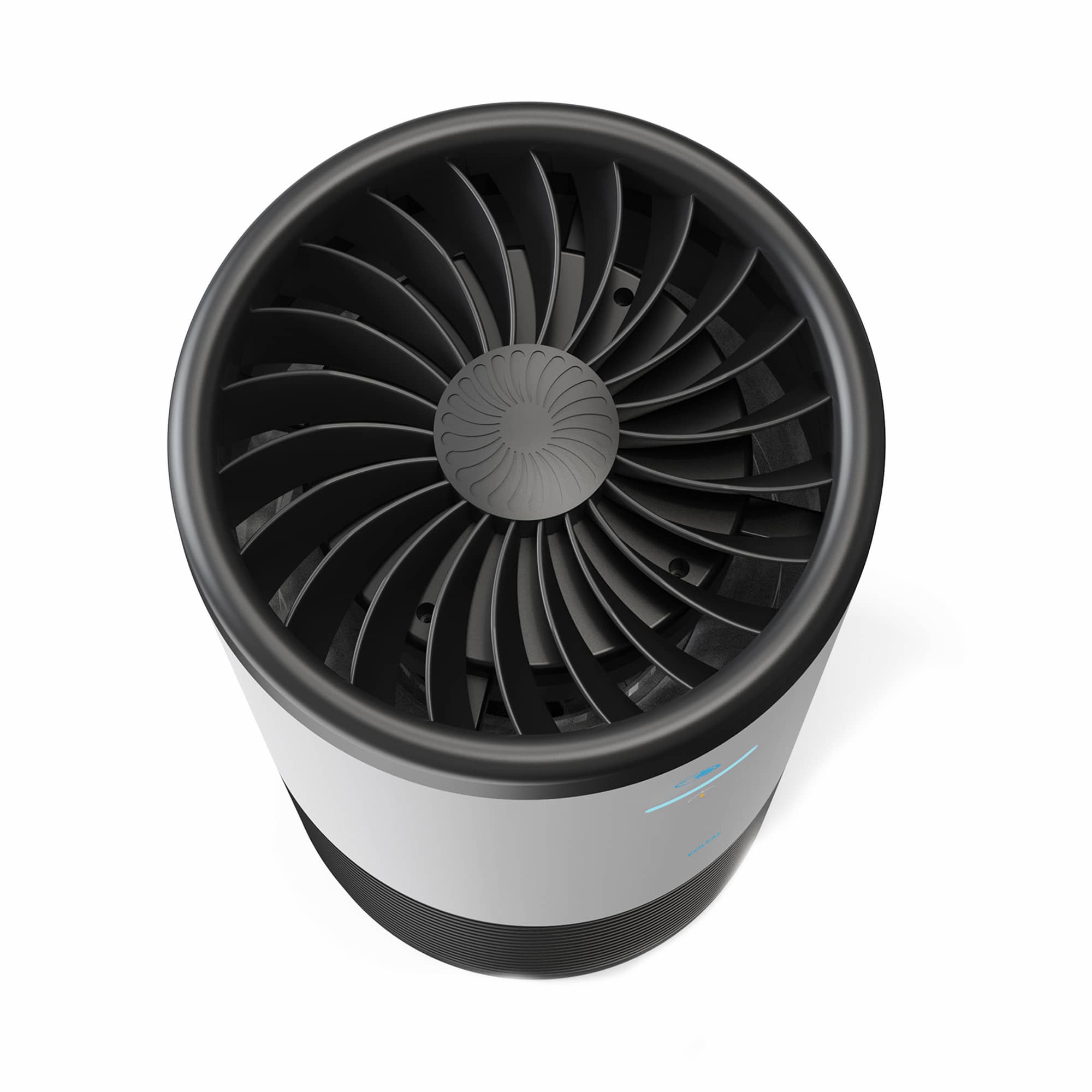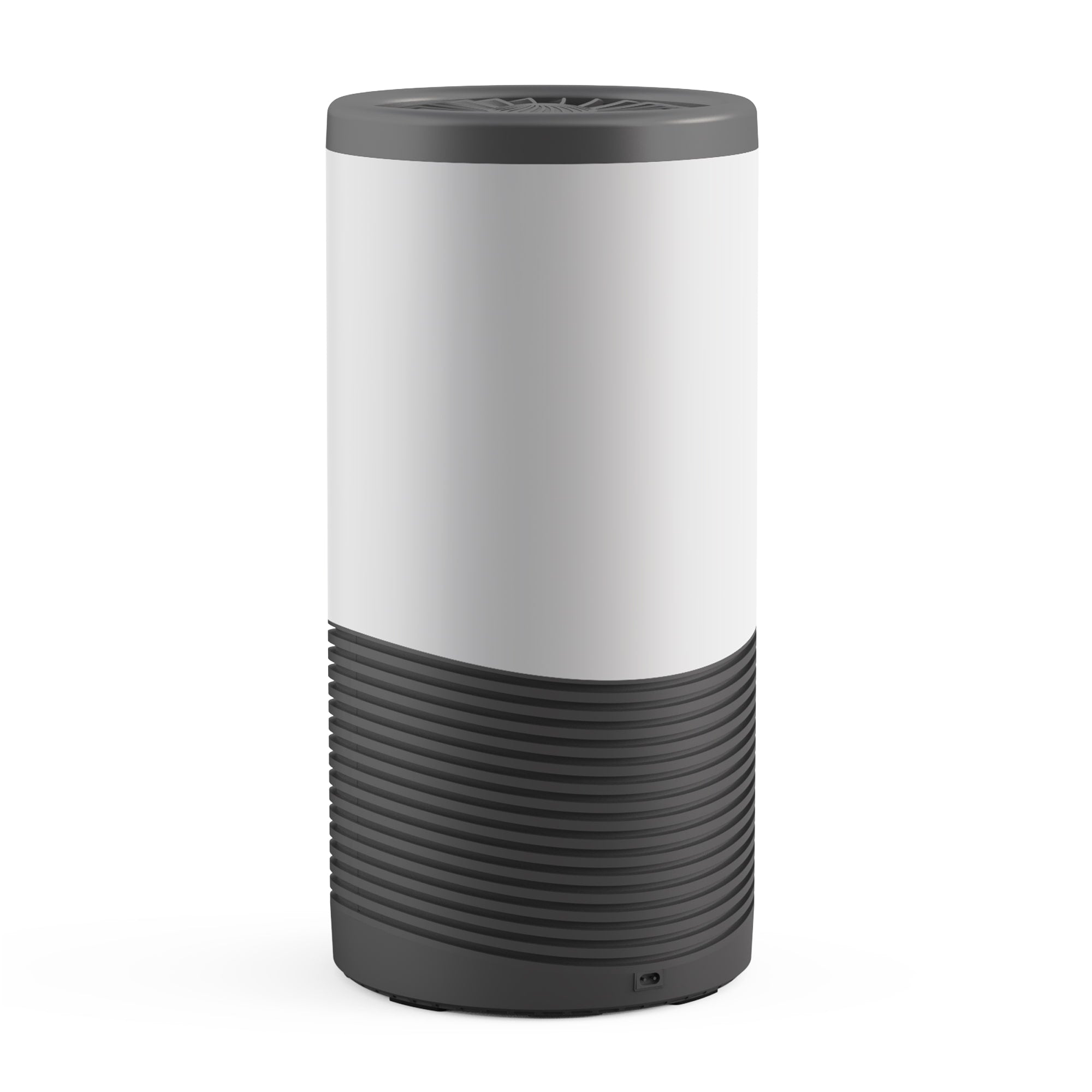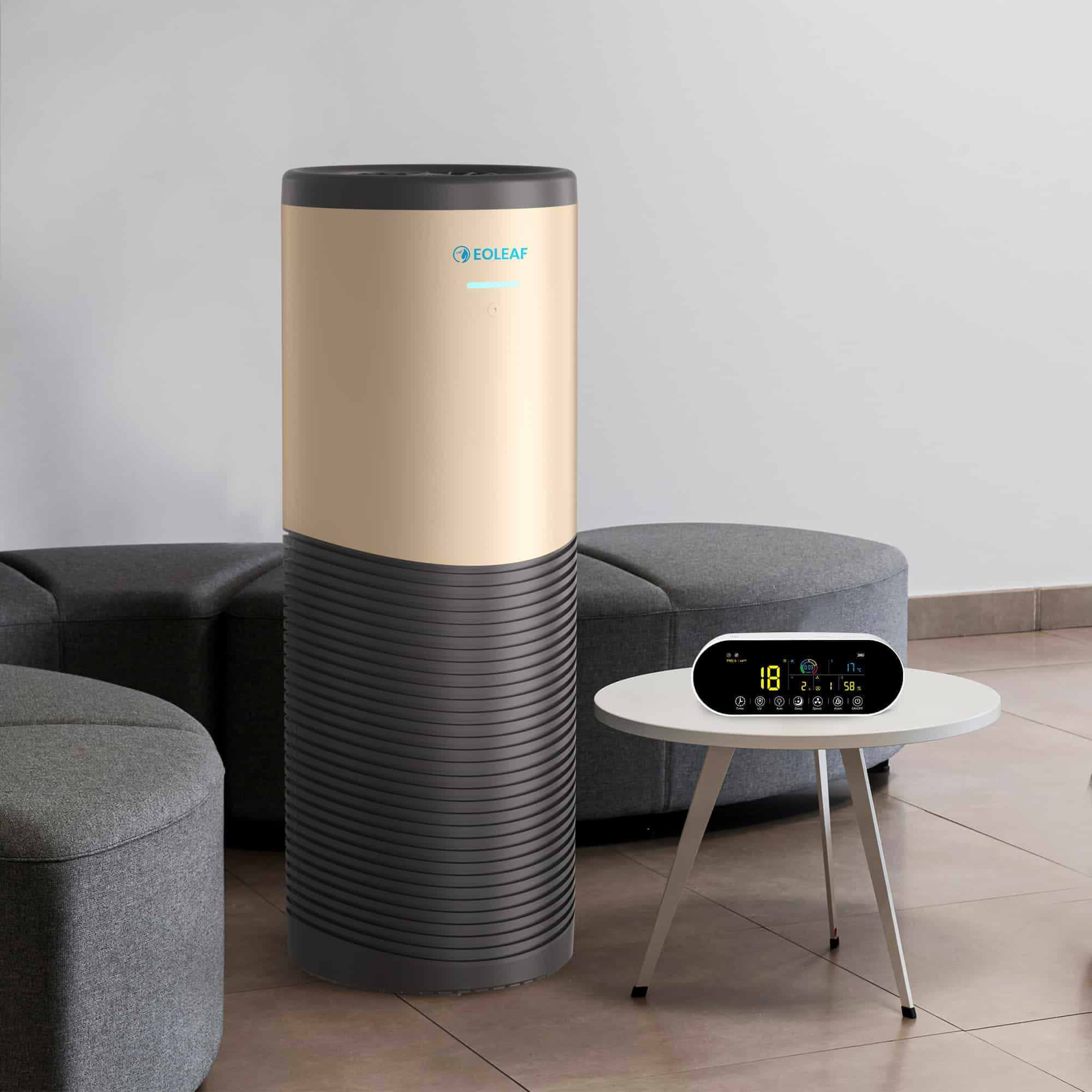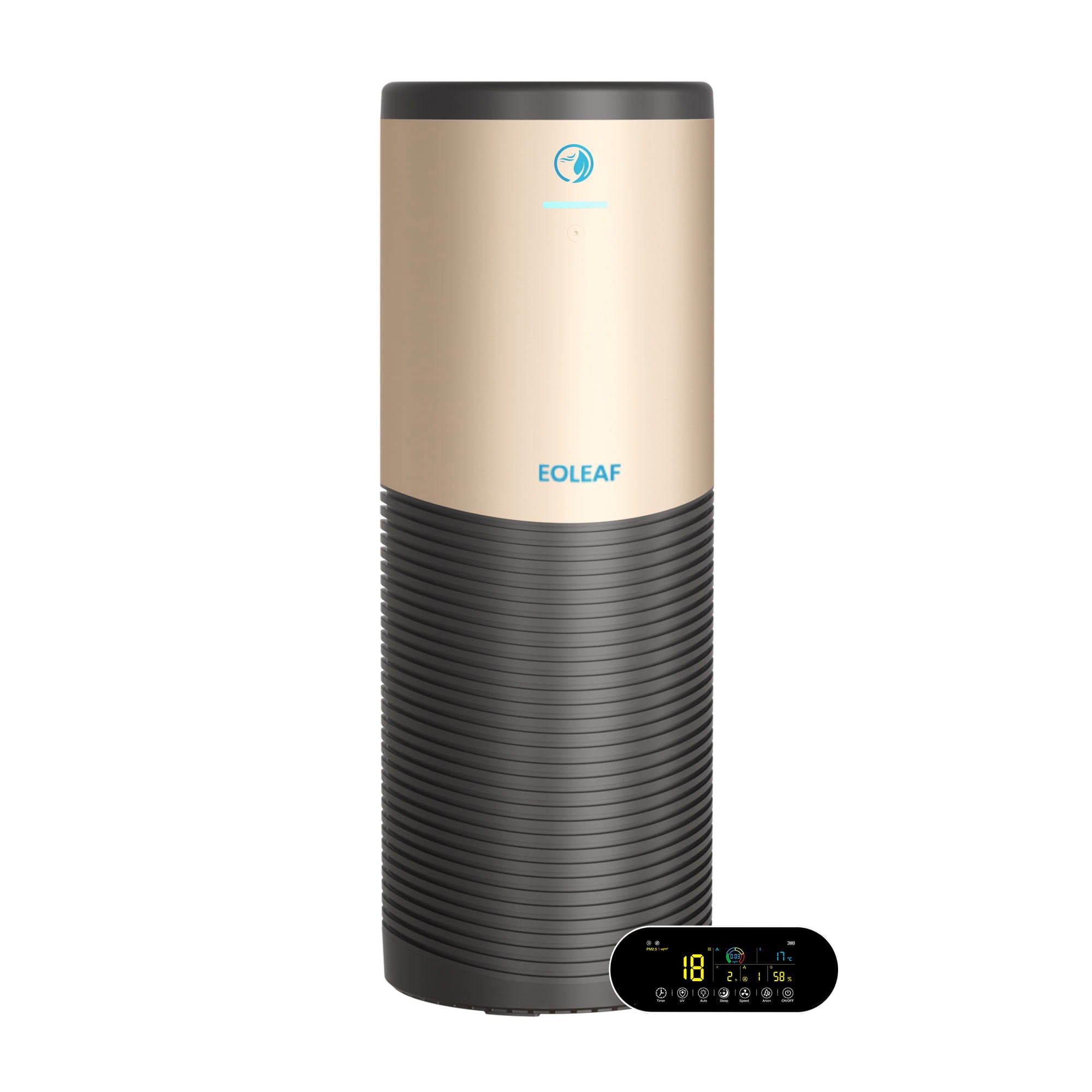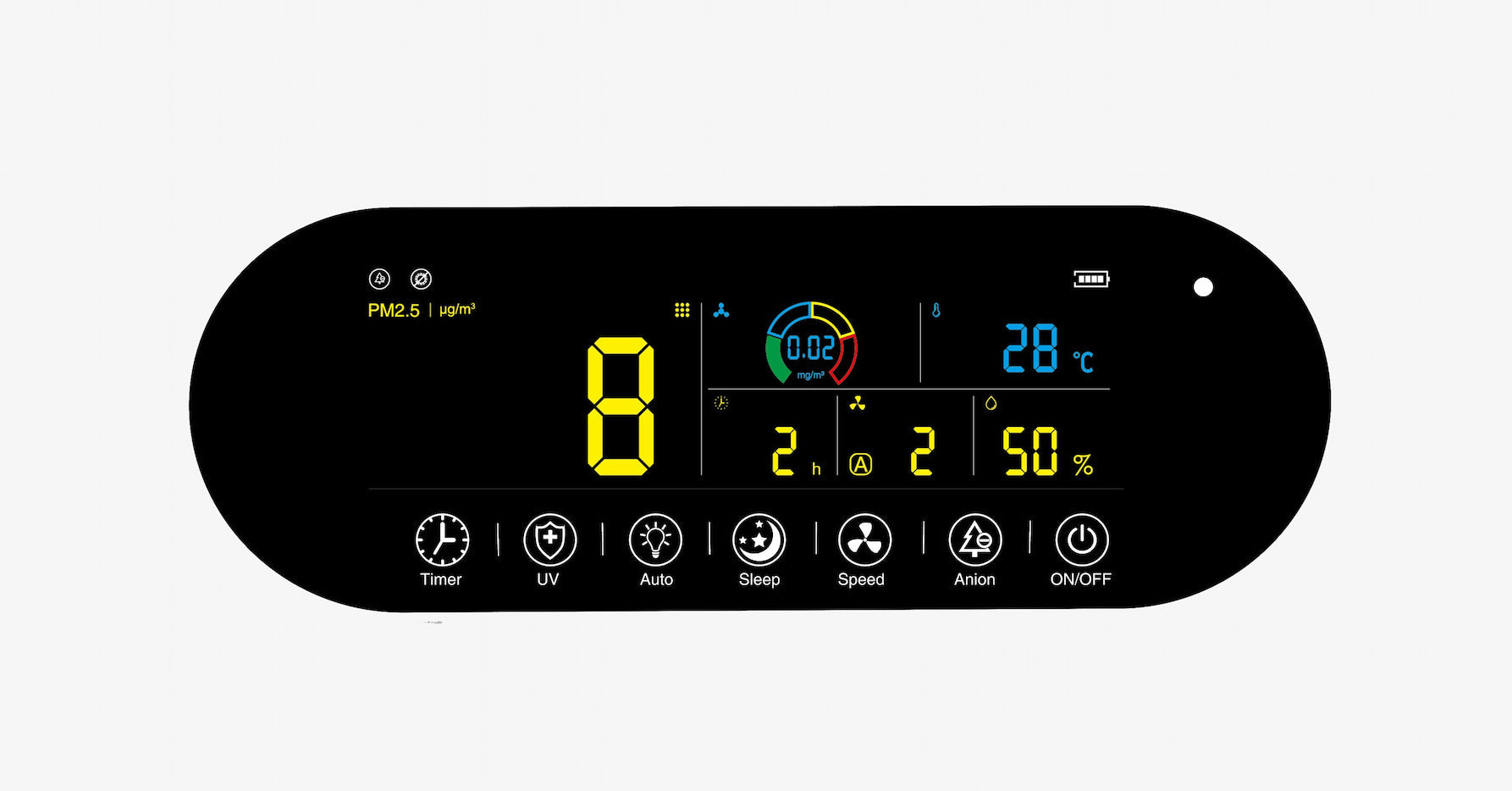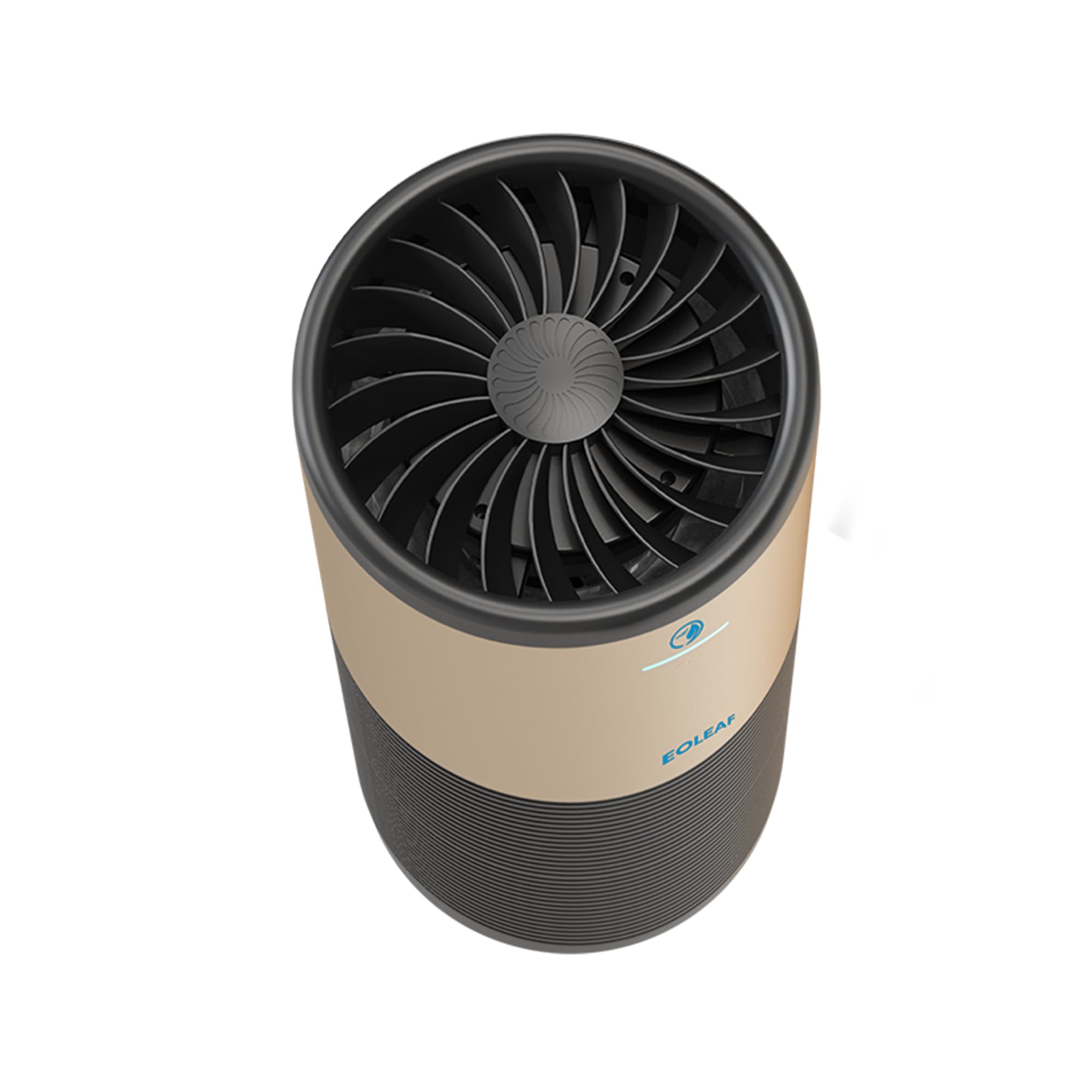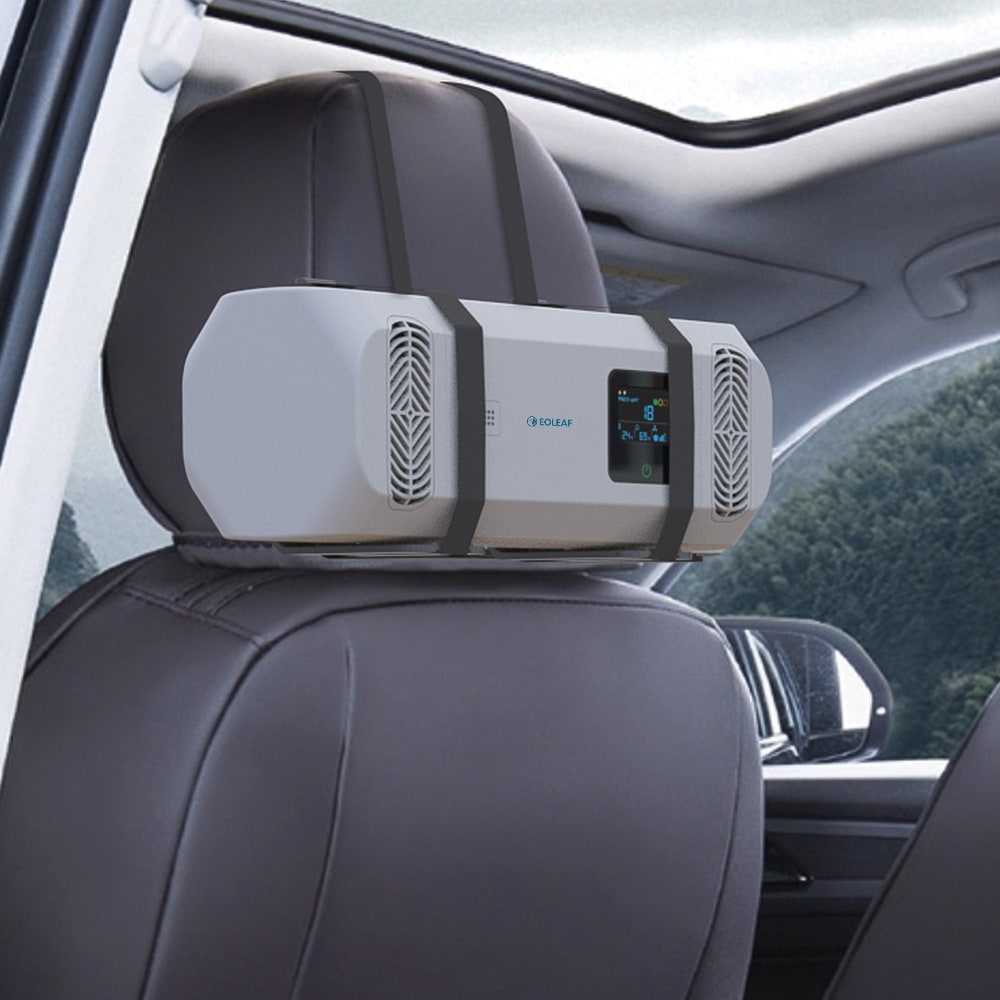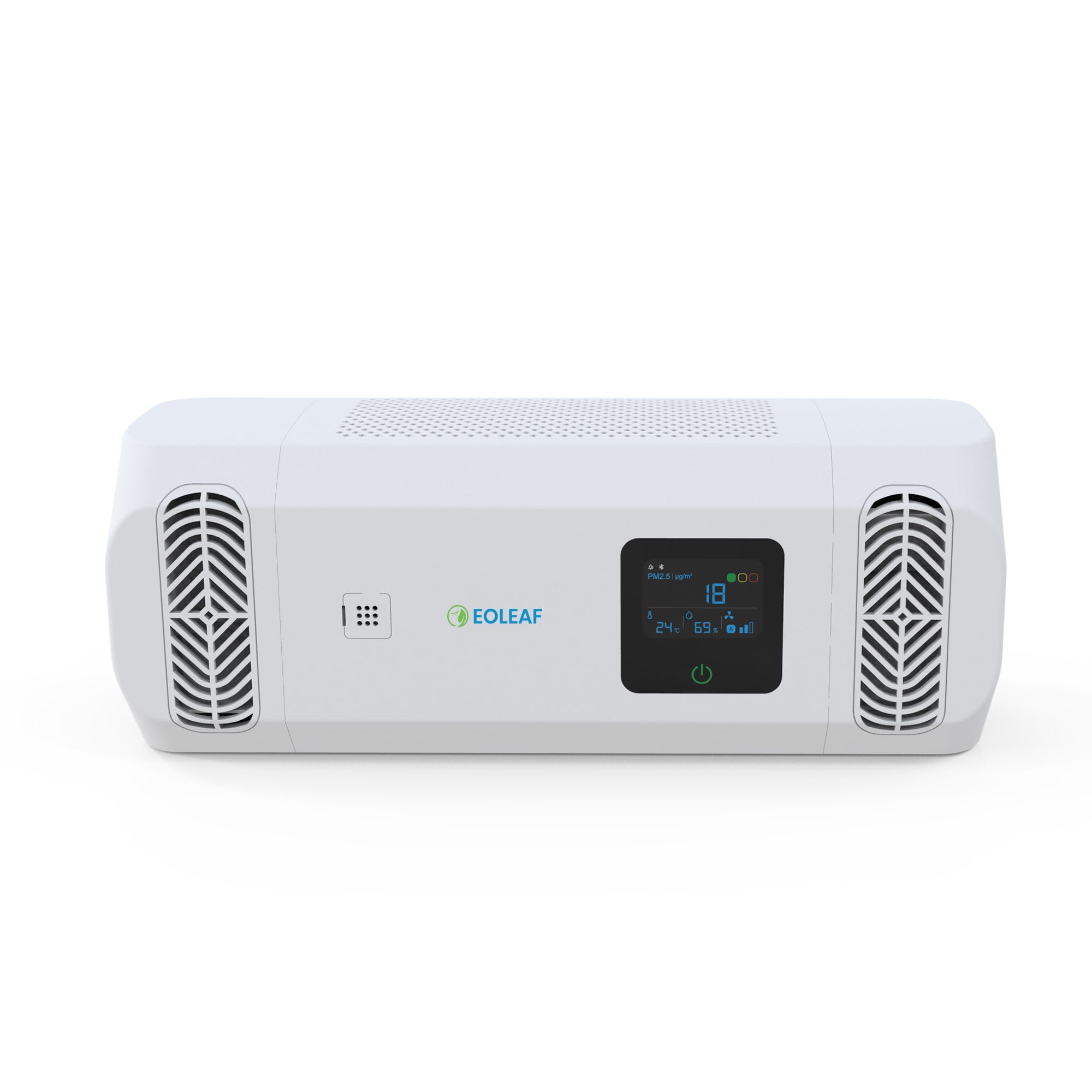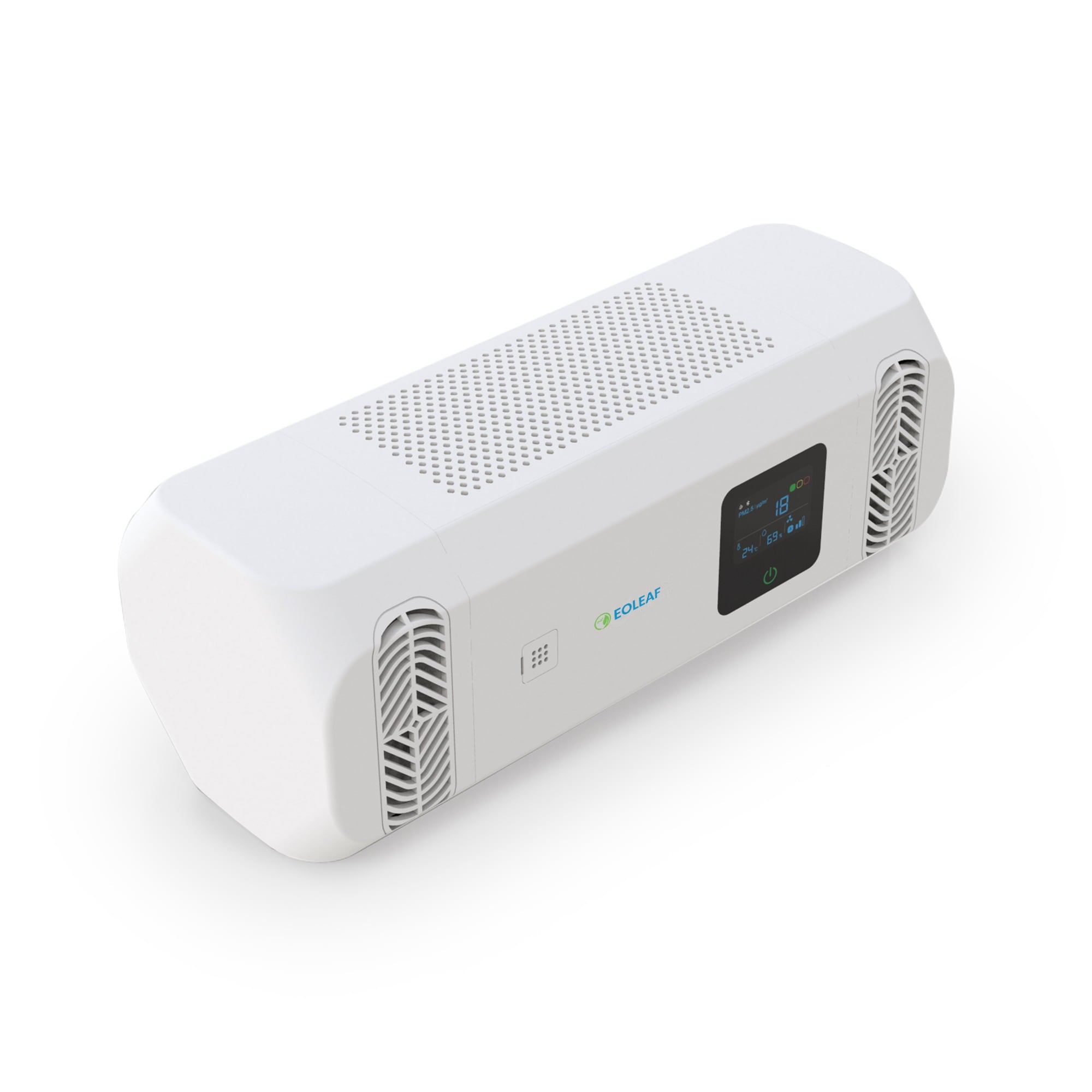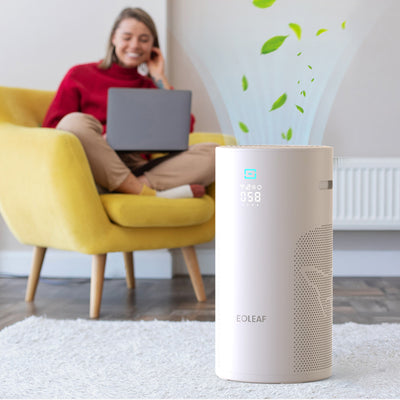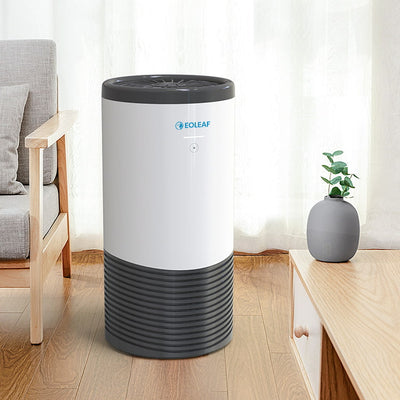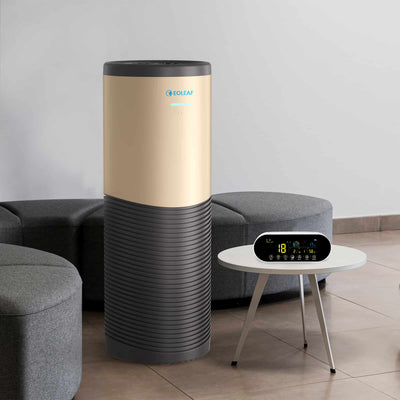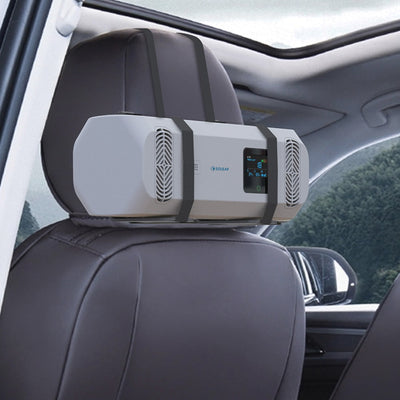Air quality in Paris: ideas, solutions, and tips for clean air
Despite improvements in recent years, air quality in the Paris region remains a problem for all of its inhabitants, especially for those who are most vulnerable. Levels of harmful air pollutants continue to exceed daily limits set by the World Health Organization (WHO), creating unnecessary suffering and burdens on the French healthcare system. Which pollutants pose the greatest dangers? Can using an air purifier in our indoor spaces protect our health? Read on to learn more.

Understanding air quality in Paris
What is air quality?
It is common to hear the terms ‘air quality’ and ‘air pollution’, but how do they differ? Air quality refers to the degree or presence of air pollutants found within the air at a certain location at a specific point in time1. Air pollution, on the other hand, is when a chemical, physical, or biological agent alters the atmosphere, leading to contamination of the interior or outdoor environment2.
When discussing air quality, certain pollutants are more harmful than others. The following pollutants are typically the most monitored:
-
Particulate matter: a heterogeneous mixture of components that have diverse physical and chemical characteristics; generally regarded as one of the most dangerous air pollutants for human and environmental health
- PM is classified based on its particle size: PM10, PM2.5, and PM0.1 are the most common
- Did you know? Particulate matter is so dangerous due to its small size which allows it to penetrate deep within the body including the blood stream, heart, and brain!
- Nitrogen dioxide (NO2): a reddish/brown gas with a strong and remarkable odour that contributes to reduced visibility in urban and industrial environments, plays a direct role in climate change, and has adverse effects on health
- Ozone: also known as ‘tropospheric ozone’ or ‘ground-level ozone’; a secondary air pollutant that forms when it comes into contact with sunlight and other air pollutants like nitrogen dioxide and VOCs and has effects on health, the environment, and plays a role in climate change
- Sulphur dioxide (SO2): a colourless gas that is a principle component of air pollution throughout the world, especially where coal is used for domestic and industrial purposes; has negative effects on human health3
 Source 4
Source 4
Air quality indexes: how to read them
The main source for learning about AQI (Air Quality Index) for the Parisian and Île-de-France regions is Atmo. The Atmo Index (Indice Atmo) takes measurements of all of the above-mentioned pollutants and uses that data to quantify and qualify air quality in real-time. This information, once aggregated, is then delivered to the public based on the degree of ambient air pollution. As seen below, the Atmo index uses different colours to quantify concentration of air pollution at that given moment with blue being the best possible air quality and purple being the worst. Atmo allows you to input an exact address in order to learn about the air quality at a specific location. It also makes air quality predictions for today and tomorrow.
To find more information about AQI throughout the Île-de-France region, input your address into the Airparif website here: https://www.airparif.fr/.

Source (Airparif) 5
Paris air quality today
Efforts made by the mayor of Paris and French government bodies have made it so that the urban agglomeration of Paris has experienced significant improvements in air quality since the start of the century. The following figure shows how the number of days exceeding the EU’s limit of PM10 (50 ug/m3) were progressively reduced in Paris in the 10-year period of 2007 to 2017.

Source (Airparif) 6
Similarly, a downward trend has been observed for PM2.5 concentrations throughout the same 10-year period.

Source (Airparif) 6
Similar downward trends can be seen for nitrogen dioxide (NO2) levels throughout the Parisian urban area.

Source (Airparif) 6
Finally, ozone levels have also experienced a reduction within the same 10-year period.

Source (Airparif) 6
Like any large city, air quality in Paris still faces challenges that impact the health of all of its inhabitants. Find out more about this in the next section.
Causes of air pollution in Paris
Air pollution has various causes in the city of Paris. Most of the air pollution issues are caused by high road density, notably diesel exhaust emissions. However, the use of vehicles in general also leads to ambient air pollution: tyres, brakes, road abrasion, and dust suspension. Vehicle traffic leads to all of the above types of air pollution: PM10, PM2.5, nitrogen dioxide (NO2), sulphur dioxide (SO2), and the creation of ozone. One study in 2024 found that emissions generated by vehicles used for transporting merchandise (trucks, lorries, and utility vehicles) accounted for 40% of the air pollution in Paris7.
A study by Atmo found that 85% of inhabitants of the Paris agglomeration are exposed to levels of PM2.5 that exceed the PM2.5 target value with the right bank of the Seine River being more heavily polluted than the left side due to traffic density6.
Additional sources of air pollution in Paris include domestic heating, the use of gas appliances, and industrial emissions.
Why is the city of Paris so vulnerable to high levels of air pollution?
Paris’ unique topography makes it vulnerable to particularly high concentrations of air pollution that tend to stagnate. When a heat wave occurs in Paris, it is generally associated with a period of calm air. This is a common phenomenon in the Paris agglomeration where the lack of wind makes it impossible to air out hot air, causing both hot air and air pollution to accumulate and stagnate. This does not typically occur throughout all of Paris, however: certain regions of Paris, referred to as ‘urban heat islands’, become both hot and polluted during periods of heat waves. This is created by a ‘trough effect’ that causes hot and polluted air to spill into these regions from surrounding higher altitudes. These vulnerable regions also have a high minerality that intensifies the situation in heat islands8.

Source 8
Of course, as previously mentioned, Paris’ dense, urban population makes it particularly at-risk for high air pollution concentrations.
Air pollution’s impact on health and the environment
Effects on Parisians’ health
A 2022 study found that deaths directly attributed to air pollution dropped from 10,350 to 6,220 during the period of 2010 to 2019. Additionally, the study determined that if air pollution levels were further reduced to annual levels recommended by the WHO, more than 7,900 deaths per year, on average, could be avoided in the Île-de-France region9. Furthermore, further reducing air pollution levels would lead to a significant improvement in quality of life for many individuals suffering from respiratory diseases.
Air pollution leads to and aggravates a host of diseases including:
- Respiratory diseases like asthma, COPD, pulmonary fibrosis, pneumonia, and allergies
- Mental health conditions like anxiety, depression, and fatigue
- Multiple types of cancer, especially lung cancer
- Stroke
- Cardiovascular disease
- Skin disease
- Obesity
- Diabetes mellitus
Consequences on the urban environment
Air pollution has many effects on the urban environment and also contributes to climate change. In general, in urban areas, fine particle pollution leads to deterioration of building façades, particularly those made of stone, cement, and glass. In regards to air pollution’s effects on buildings, parts of buildings are referred to as either ‘dark areas’ or ‘light areas’. Dark areas are those that are protected from rain and wind and/or are in direct contact with pollution sources. Over time, exposure to air pollution causes a blackening of these areas: thick, black crusts that form and accumulate that have a high sulphate and ash content. These areas are typically observed in lower parts of buildings that are closer to traffic and, thus, traffic emissions. Light areas, on the other hand, are more exposed to the elements, especially rain, that washes away the air pollutants that have settled on these surfaces between rainfalls. These light areas have an eroded appearance compared to their dark area counterparts. The effect is particularly noticeable in the photo of the Church of St. Eustache below.

Source 10
Stained glass is also heavily impacted by air pollution, taking on a blackened appearance. The older the stained glass, the more at risk of damage. This is due to differences in glass manufacturing that make them more prone to being chemically altered by modern-day air pollutants. An example can be seen below in stained glass found at the Sainte-Chapelle.

Source 10
Buildings are not the only part of urban life impacted by air pollution. Air pollution impacts urban biodiversity, especially bird and insect populations. Paris serves as a refuge for nearly 2,800 animal and plant species, all of which are vulnerable to the effects of ambient air pollution. Animals living in urban areas breathe the same air we do and also suffer from adverse health effects of air pollution. Furthermore, acid rain poses issues for both plant and animal species. Acid rain occurs as a result of rain droplets combining with sulphur dioxide and nitrogen dioxide that are emitted into the air when fossil fuels are burned. When it falls, it causes damage to plant leaves and can acidify bodies of water and soils that many plant species call home.
Solutions and recommendations
How do you protect yourself from air pollution in Paris?
The best way to protect yourself from outdoor air pollution in Paris is to stay informed! Track outdoor air pollution concentrations on a daily basis using an app like AirVisual or Plume Labs. If levels are high, stay indoors as much as possible. If staying indoors is not an option, be prepared and wear a mask (FFP2-grade) to protect yourself from inhalation.
Another excellent way to protect yourself from the dangers of air pollution is to filter the air in your indoor spaces: at home, at work, and in your car. Remember: outdoor air is 5 to 7 times more polluted than indoor air, and indoor air pollution consists of all the same air pollutants that you find outdoors. In urban areas, ambient air pollution enters indoor spaces when doors or windows are opened. Insufficient ventilation makes it impossible for this polluted air to be filtered out, causing pollutant accumulation and danger to your health. This is where a high-efficiency air purifier comes in! Eoleaf devices provide some of the most comprehensive air pollution technologies on the air purification market. With an impressive 8 steps of air filtration technologies, Eoleaf devices filter all types of air pollution including fine particle pollution (PM10, PM2.5, and PM0.1), chemical pollution (nitrogen dioxide, sulphur dioxide, VOCs, ozone, and carbon monoxide), and biological pollution (germs and allergens like pollen, dust, mould and spores, and pet hair and dander).
Every day steps that you can take to reduce your air pollution contributions
Of course, the best way to improve air quality is to reduce your contributions to it wherever possible. Sometimes, it may feel like air quality is out of our control, but we can all take steps to reduce our emissions. Some may include:
- Reduce your use of a combustion vehicle: opt for cleaner means of transport like biking, walking, and public transport. Take advantage of Paris’ many bike lanes and walkability!
- Use clean energy for heating your home and avoid the use of wood-burning and gas appliances.
- If you must use a vehicle, do your best to carpool! The less cars on the road, the better.
What is the city of Paris doing to reduce air pollution and emissions?
The agglomeration of Paris has taken multiple steps to combat air pollution and has been doing so since 2001. Find some of them listed below:
- Restriction of vehicle traffic for the most-polluting vehicles in ZFEs (‘zone à faibles émissions’ or low-emission zones)
- Developing a clean-energy automobile park or areas where people can park their cars outside of the city in order to take more sustainable transportation methods into the city
- Reorganisation of public spaces to expand bike lanes and sidewalks
- Expansion of public transportation lines
- Encouraging carpooling and ridesharing/renting of electric vehicles11
These are just a few of the projects currently in progress in the city of Paris. For a more detailed list, refer to the mayor of Paris’ website (as found in resource #11 below).
Protect yourself from indoor air pollution with Eoleaf
Investing in an air purifier for your indoor spaces is an important and simple way to protect your health from harmful air pollution. Although it may be difficult to keep you and your loved ones safe from outdoor air pollution in Paris, seeing as we spent 90% of our time indoors on average, purifying your indoor air is crucial. Eoleaf air purifiers offer the most comprehensive air purification on the market, boasting 8 different filtration technologies that combat all types of indoor air pollution. Our devices are medical-grade and HEPA H13-certified, meaning that they are third-party tested for efficiency in filtering 99.97% of all pollutants down to a size of 0.01 microns in a single pass. Breathe fresh air in your indoor spaces in Paris with Eoleaf.

Resources
1 Center for Science Education. What Is Air Quality? | Center for Science Education. (2025). https://scied.ucar.edu/learning-zone/air-quality/what-is-air-quality
2 World Health Organization. (n.d.). Air Pollution. World Health Organization. https://www.who.int/health-topics/air-pollution#tab=tab_1
3 World Health Organization. (2021, September 22). Who Global Air Quality Guidelines: Particulate matter (PM2.5 and PM10), ozone, nitrogen dioxide, sulfur dioxide and carbon monoxide. World Health Organization. https://www.who.int/publications/i/item/9789240034228
4 The invisible danger: key air pollutants and their impact. MANN+HUMMEL. (n.d.). https://www.mann-hummel.com/en/insights/air-pollutants-types-sources-impact.html
5 L’observatoire de la Qualité de l’air en île-de-france. Accueil. (n.d.). https://www.airparif.fr/
6 Air Quality in the Paris region - summary 2017. AIRPARIF - The Observatory of Air Quality in the Paris region. (2018, March). https://www.airparif.fr/sites/default/files/document_publication/bilan-2017-anglais20180829_0.pdf
7 Franceinfo. (2024, November 5). Fewer in number but more polluting, heavy goods vehicles and utility vehicles are responsible for 40% of air pollution in Paris, according to a study by the associations Respire and Clean Villes. Franceinfo. https://www.francetvinfo.fr/environnement/moins-nombreux-mais-plus-polluants-les-poids-lourds-et-les-utilitaires-responsables-de-40-de-la-pollution-de-l-air-a-paris-selon-une-etude-des-associations-respire-et-clean-cities_6878954.html
8 The flow of urban heat in the centre of the Parisian conglomeration - book 3: Thermal breezes. Apur. (2017, February). https://www.apur.org/en/our-works/flow-urban-heat-centre-parisian-conglomeration-book-3-thermal-breezes
9 Host S, Saunal A, Cardot T, Ghersi V, Joly F. Mortalité attribuable à la pollution atmosphérique en Ile-de-France. Quelle évolution depuis 10 ans et quels bénéfices d’une amélioration de la qualité de l’air dans les territoires ? Bull Epidémiol Hebd. 2022;(19-20):326-35. http://beh.santepubliquefrance.fr/beh/2022/19-20/2022_19-20_1.html
10 Effects on buildings. Accueil. (n.d.-a). https://www.airparif.fr/effets-sur-les-batiments
11 Les actions de la Ville pour une meilleure qualité de l’air. Les actions de la Ville pour une meilleure qualité - Ville de Paris. (2019, September 17). https://www.paris.fr/pages/les-actions-de-la-ville-pour-une-meilleure-qualite-de-l-air-7103
Eoleaf's range of air purifiers
NeoPur 400 air purifier
40 m² (450 sq ft) coverage area - Smart & Connected
TeraPur 600 air purifier
80 m² (850 sq ft) coverage area - Ultimate all-in-one
AltaPur 700 air purifier
120 m² (1300 sq ft) coverage area - Professional model
PurCar air purifier
HEPA H13 Filter & Ioniser - For all vehicles

